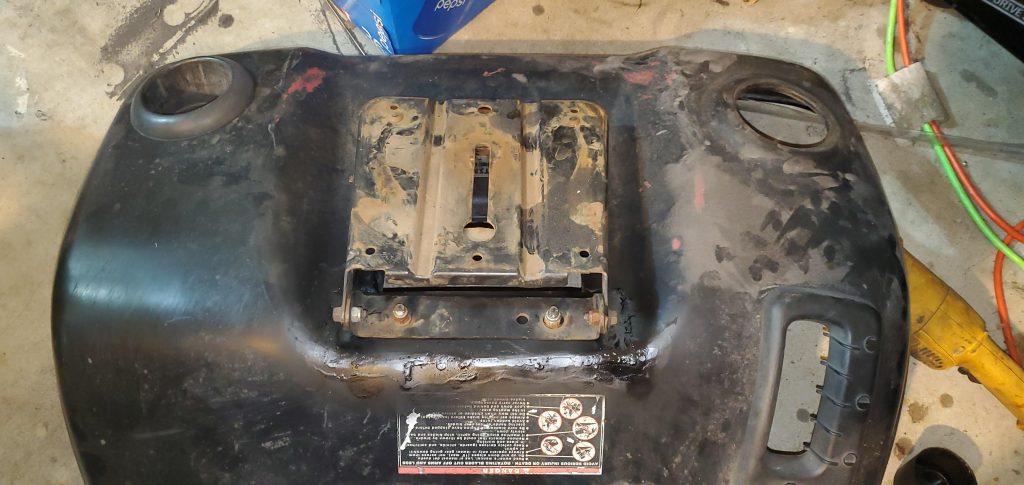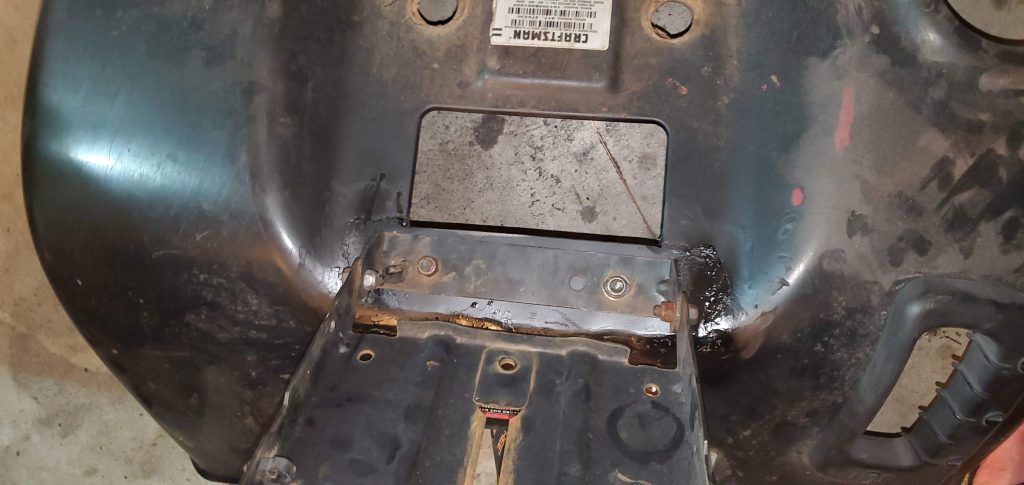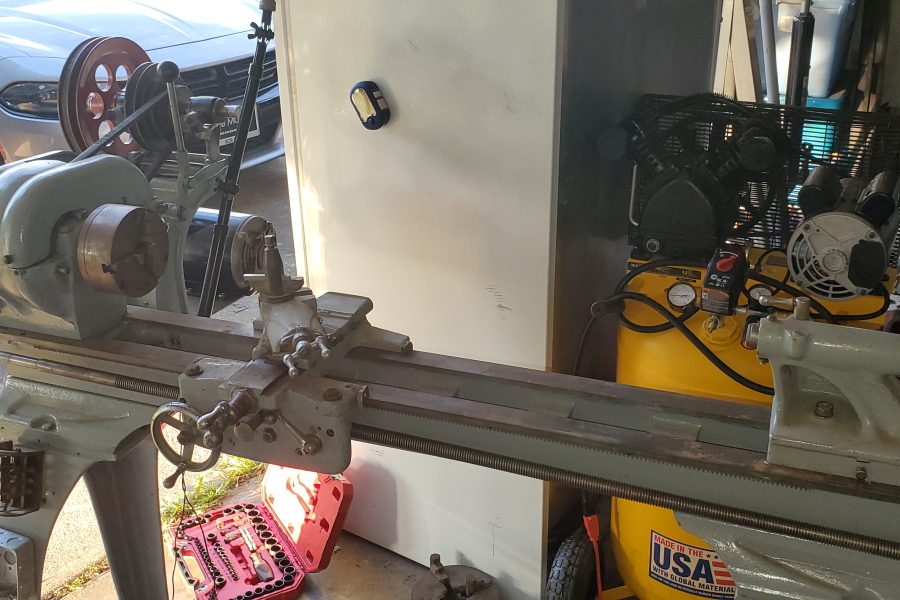Warning: I have very little experience doing body-work. I am also not very experienced stick-welding.
Somebody asked me to repair the rear fender on a craftsman mower. Upon inspection, the thin metal under the seat has rusted out.
The best course of action would be to cut out and replace the afflicted metal. Let’s get started.
Here is the piece before starting work. As you can see, the fender is rusted out where the seat bracket would normally mount to.
The first step was to obtain some replacement metal.
I cut a section of 16 gauge mild steel after measuring the dimensions of the affected area. Next I placed the new metal over the affected area, and traced out the area to remove.

Next, I cut out the afflicted area.





After the area was cleaned up, I did another test fit. As you can see- it is a very snug fit now with no overlap.
To save myself time later, I decided to drill the holes for the seat bracket now, while I can put the piece of steel on my drill press. The first step, was to disassemble the old seat bracket.

You should use a center punch when possible. It makes getting a hold started in the proper location much easier with a drill.

The next step was to lay the seat bracket on the fender to get the measurements correct. If the measurements are not correct, the seat will sit on the lawn mower crooked. Measure twice (or three times), cut / drill once.

After the seat bracket was properly aligned and the locations for the holes were marked. It was time to use my trusty old drill press to create the holes. If you are drilling through thicker steel, make sure to use some lubricant to cool the drill bit. I used some WD-40. Heat kills drill bits!



At this point, normally I would pull out my trusty TIG welder….. Which will allow me to easily control my heat input with a foot-pedal to give good penetration, yet, preventing burning holes. BUT….. I seem to be out of argon.

So, without argon, I will be limited to using a stick welder, which will not be ideal for this thin metal. As well- I am much less talented using a stick welder.

When welding thin metal / body panels, you should skip around to prevent putting too much heat in a single location. If you weld a full side in the same pass, you will add enough heat into the material to distort it.
I performed the welding with a combination of 6011 and 7024 rods.. because, That is what I have laying around.

After a hour of welding and grinding, the piece was starting to look somewhat finished. Assuming I had properly filled my bottle of argon, and used the TIG, this step would have taken much less time, and would not have required nearly as much grinding.

Despite how it may look, the piece is very smooth to the touch.
The final step was to apply black primer (to prevent the metal from rusting), and to re-attach the seat bracket.


That’s it, all done!
The new replacement metal will likely out-last the rest of the lawn mower.




